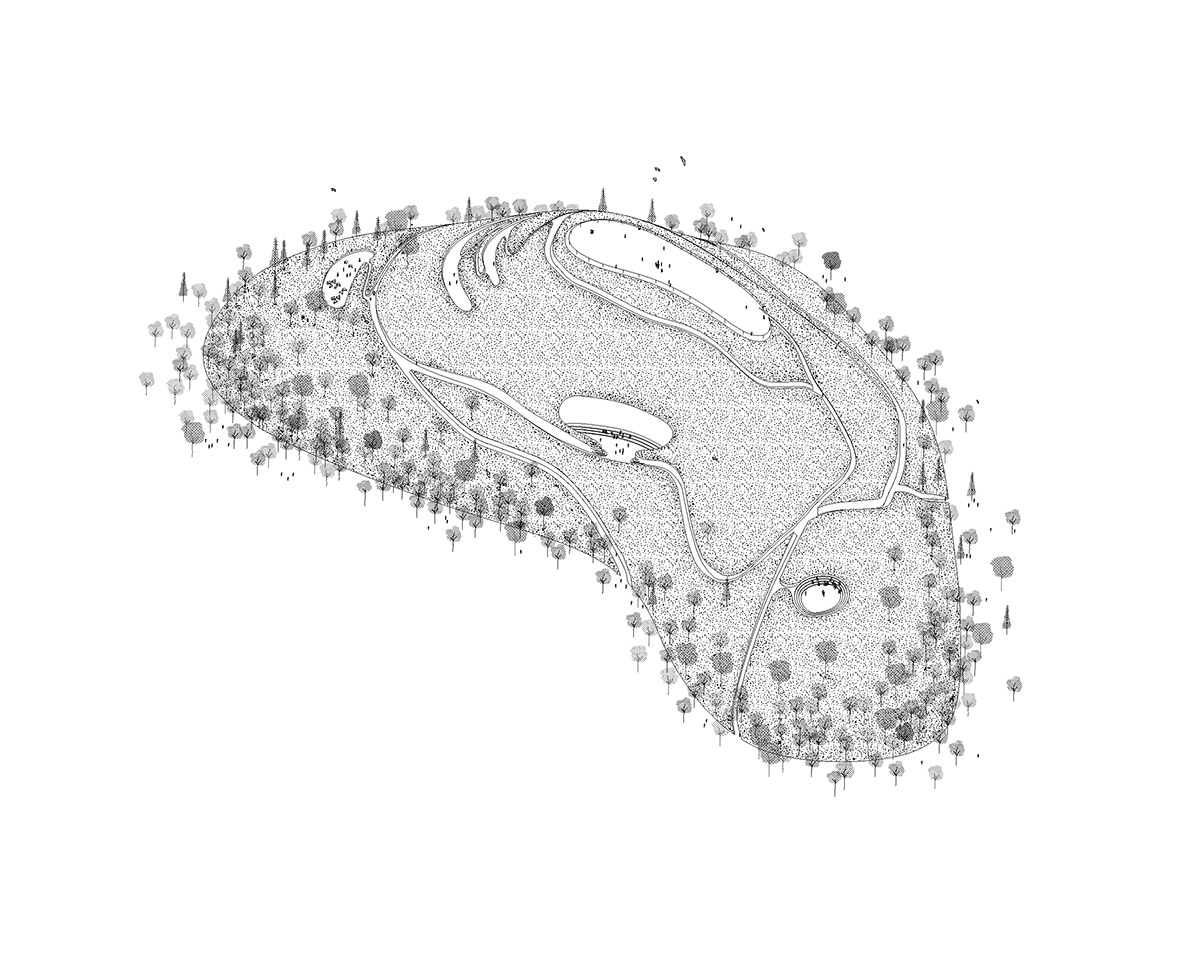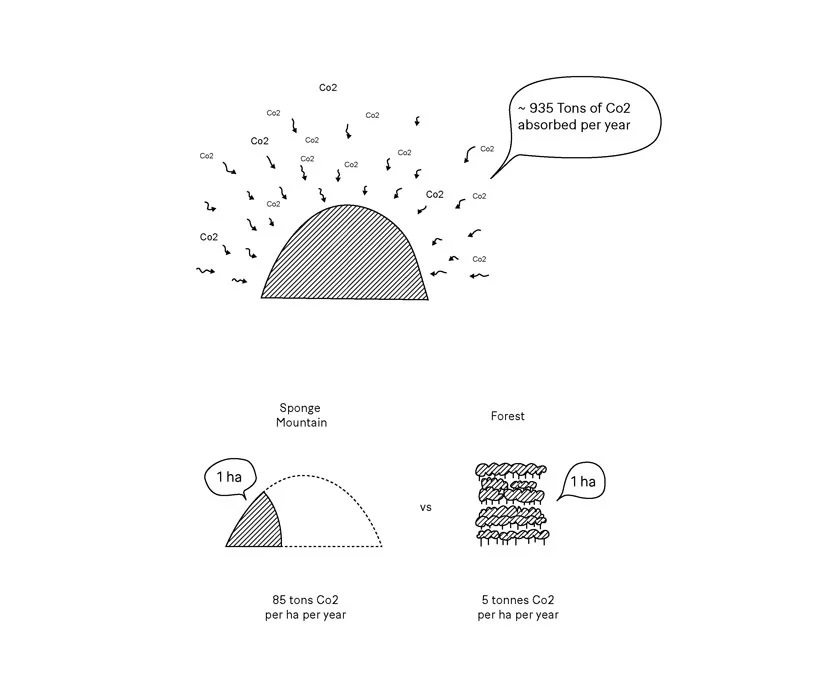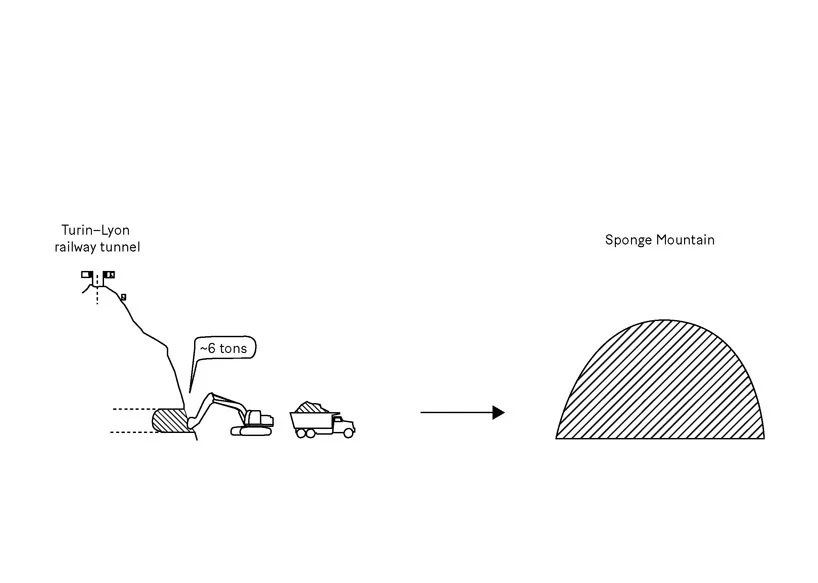Submitted by WA Contents
Angelo Renna created artificial sponge mountain to absorb CO2 in Turin
Italy Architecture News - Oct 26, 2018 - 05:21 18387 views

Amsterdam-based architect Angelo Renna has created giant sponge mountain to absorb carbon dioxide emmissions from the air in Turin, Italy. Reaching 90 meters high, the artificial mountain is made of soil excavated from the construction site of the railway tunnel connecting Turin to Lyon.
Installed as "a new green landmark" in the center of the city, the 90-metre-high sponge mountain is aimed to absorb the carbon dioxide, released by traffic, movement and industry, by mixing with engineered soil - a mixture of sand and concrete, and in result, no polluted air will be released into the air.

Renna's proposal aims to contribute to climate change to a large extent by preventing the high amount of polluted weather. Apart from its function, the artificial mountain includes walkways, paths and green vegetation for people to enjoy by overlooking the city.

Renna states that the artificial mountain has the capacity to absorb CO2 with an inorganic form at a rate of 85 tons per hectare, per year over five years. When Renna compared to a hectare of rainforest which absorb 5 tons per hectare per year, she says that the project could create a significant impact in the city.





Angelo Renna developed this special concept for SUCCESS, an organization seeks to determine the performance of soils to act as a carbon sink, by engineering them to absorb carbon and to convert them into a benign state.
All images courtesy of Angelo Renna
> via Angelo Renna
